Showing 761–770 of 1063 results

This study, in an ethono-historical perspective, explores the multi linear evolution of Sakti worship in Orissa: from the pre-/protohistorical times to the late medieval epoch, and its continuity into the modern period with contextual focus on its probable genesis, historical development, festivals, ritualistic patterns, and cultural sources including myths, legends and folklore.
In the Hindu world-view, Shakti is the Mother of the Universe: the highest primal power. She is, accordingly, the all-pervading, intagible energy principle that propels the cosmos and its endless human dimensions with the life-throbs of activity and culture. Many are her songs, countless her stories, numerous her names. Worship of Shakti, as a pan-Indian phenomenon, predates Sanskritic influences of every kind. Combining his extensive fieldwork with diverse published and unpublished sources: archaeological, historical and religious, Francesco Brighentis study traces its presence in Orissa. Which, perhaps, provides the best paradigm of an age-old Goddess cult, deeply rooted in the autochthonous religious traditions of Eastern India. It is the first, all-encompassing study, in an ethono-historical perspective, exploring the multilinear evolution of Shakti worship in Orissa: from the pre-/proto- historical times to the late medieval epoch, and even its continuity into the modern period with contextual focus on its probable genesis, historical development, festivals, ritualistic patterns, and cultural sources including myths, legends and folklore. The book also incorporates, besides a description of important Shakta centres in Orissa, a study of the Divine Mothers iconographic features in Her multifarious manifestations. Together with around hundred illustrations highlighting the varied representations of Shakti in sculpture, this study will interest not only the scholars of archaeology, history and religion, but historians of art as well.
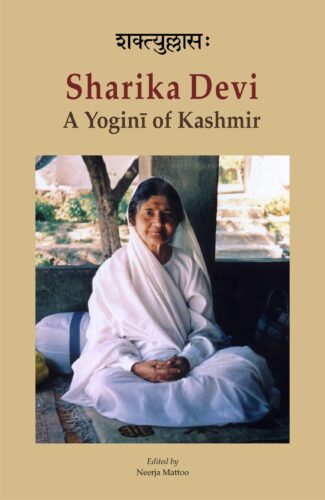
Sharika Devi, the chief disciple of Swami Lakshman Joo, is a modern-day saint of Kashmir Saivism. A many-splendoured personality, she was constantly absorbed in God-consciousness while performing her worldly duties. This volume reminisces of her spiritual powers.
Kashmir has a long tradition of yoginis (female saints) and poetesses from ancient times. The life of Yogini Sharika Devi is a witness to this unbroken tradition till the twentieth century. This book delves into the life of Yogini Sharika Devi, who was always absorbed in spiritual practice and in serving her guru, Swami Lakshman Joo of Ishwer Ashram of Ishber, Srinagar, Kashmir. Being the chief disciple of Swamiji, Deviji was well focused on her sadhana and was devoted to the mantra of silence for her spiritual prosperity.
Thus she is one of the women saints of Kashmir Saivism. An ideal disciple of her Gurudeva, Deviji was a many-splendoured personality, constantly absorbed in God-consciousness while performing her worldly duties. A jivanamukta, as enunciated by her Gurudeva, she wholeheartedly dedicated her entire life to the service of her Master with single-minded devotion. Though she led a simple life, many were witness to her spiritual powers while she was alive.
This volume, being brought out at the centenary celebrations of her birth, is a compilation of tributes from various people who knew Sharika Devi from close quarters, and who were a witness to her compassion and spiritual powers on numerous occasions. A valuable part of the book is Sharika Devis own contribution to it in the form of her mystic poems. An introduction by the internationally known scholar of Kashmir Saivism, Bettina Sharada Bäumer, makes the book invaluable.
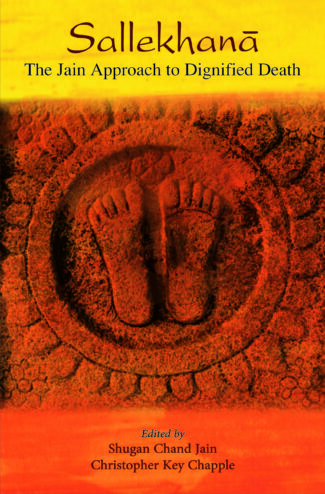
Jainism regards life to be eternal. Recognizing that the soul can never die, but merely takes a new body, a careful tradition welcoming death through intentional fasting developed more than two thousand years ago. A legal challenge Rajasthan was put forward in 2013, suggesting that this practice is harmful and coercive and targets women in particular. For a short while SallekhanÀ, which means the thinning of existence, was declared illegal. In response to this controversy, three conferences were convened by the International School for Jain Studies to explore the legal, religious, and medical aspects of this practice. Experts discussed the long history of the practice, attested to in epigraphs throughout India; the ways in which fasting to death has become an acceptable practice in the Western world; and contemporary instances of its observance in India. This volume presents an interdisciplinary approach to thinking about the end of life, from biomedical, historical, religious, and legal perspectives.
Jainism regards life to be eternal. Recognizing that the soul can never die, but merely takes a new body, a careful tradition welcoming death through intentional fasting developed more than two thousand years ago. A legal challenge Rajasthan was put forward in 2013, suggesting that this practice is harmful and coercive and targets women in particular. For a short while Sallekhanā, which means the “thinning of existence,” was declared illegal. In response to this controversy, three conferences were convened by the International School for Jain Studies to explore the legal, religious, and medical aspects of this practice. Experts discussed the long history of the practice, attested to in epigraphs throughout India; the ways in which fasting to death has become an acceptable practice in the Western world; and contemporary instances of its observance in India. This volume presents an interdisciplinary approach to thinking about the end of life, from biomedical, historical, religious, and legal perspectives.

This inspirational guide to an open, critical exchange between India and the West is framed as a tribute to Dr. Bettina Baumer, an eminent scholar of Indology. Comprising 32 essays, segregated into three sections Indian philosophy and spirituality, Indian Arts and Aesthetics, and Interreligious and Intercultural Dialogue.
The present volume is a tribute to Dr. Bettina Baumer, an eminent scholar of Indology and Religious Studies in general and of Kashmir Shaivism in particular, and one of the important exponents of interreligious dialogue. It contains 32 essays which are divided into three sections, representing the main fields of study of Bettina Baumer. Section I – Indian Philosophy and Spirituality is focussed on the non-dualistic Tantric Shaivism of Kashmir. The range of topics reach from an analysis of the term Vishranti/ repose (A. Chakrabarti, Hawaii), the first English translation of the Tantric hymn Bahurupa-garbhastotra (H.N. Chakravarty, Varanasi) to the Parvan rites described in Chapter 28 of Abhinavaguptas Tantraloka (A. Padoux, Paris) and a commentary on the opening verses of Abhinavaguptas Tantrasara (A. Sanderson, Oxford). This focus is complemented by other important contributions, for example on Gandhis Ethical Thought (J. Prabhu, Los Angeles) and an analysis of the interactions between Vedanta and Tantra, as shown in the Lalitatrishatibhashya (A. Wilke, Munster). Section II – Indian Arts and Aesthetics contains nine significant articles from outstanding scholars: Kapila Vatsyayan (on the representation of Mount Kailasa in myth, temple architecture and classical literature), Devangana Desai (on the relevance of textual sources in the study of temple art), R.N. Misra (the history of Shaiva-Siddhanta in Central India), R. Nagaswamy (Guhavasi and Devaraja in Cambodia) and others, along with illustrations. The last section on Interreligious and Intercultural Dialogue wants to stimulate the dialogue between the Indian and Western history of thought especially with two articles: an examination of the concept of the Self and its knowledge in the Western mystical tradition, compared with the concept of self-knowledge in the Upanishads (A.M. Haas, Zurich); and a study of Nothingness as a key term in Johannes Tauler. This part also contains reflections on an overcoming of the social, economic and political crisis of our contemporary world: e.g. on the cross-cultural dimension of an ethics of justice (M. von Bruck, Munich) and on the interculturation of religious life (F. X. DSa, Pune/Wurzburg). This section ends with the key article by R. Panikkar on essential questions in the dialogue between Hinduism and Christianity, presented through the metaphor of The Drop of Water. The volume will be useful not only to scholars of Indology, Indian Philosophy, Indian Arts, and Religion, but also to anybody interested in an open, critical exchange between India and the West or in search of ways out of the fundamental crisis of our time.
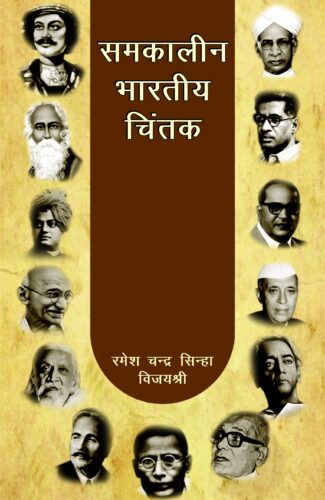
Phiolosophical thoughts of modern Indian thinkers are quite comprehensive. While they are conversant with the Vedas, Upanisads and the Quran, they are also quite known to the Western thoughts. Philosophical thoughts of Raja Rammohun Roy, Tagore, Vivekananda, Mahatma Gandhi, Sri Aurobindo, Iqbal, K.C. Bhattacharya, S. Radhakrishnan, M.N. Roy, Ambedkar, Jawaharlal Nehru, J. Krishnamurty and Loknayak Jayaprakash Narain are streamlined and discussed.
This is the age of enlightenment. The contemporary Indian thinkers accept and practise the old values, traditions, and have paved the way for a new thought process in philosophy. And this philosophy is the product of an age of India’s struggle against long and suppressive foreign rule, hampering the growth of our thought system. However, one could see a new synergy in post- independent India a philosophical renaissance. In such a background, these thinkers propose positive, synthetic and integral world-views.
The thoughts of contemporary thinkers are quite comprehensive and exhaustive because they are well aware of the Vedas, Upanishads and the Quran. On the other hand, modern Indian philosophers have reconciled between the Western and Eastern, and the ancient and modern thoughts. This volume streamlines the thoughts of Rammohun Roy, Rabindra Nath Tagore, Vivekananda, Mahatma Gandhi, Sri Aurobindo, Iqbal, K.C. Bhattacharya, Sarvepalli Radhakrishnan, M.N. Roy, Bhim Rao Ambedkar, Pandit Jawaharlal Nehru, and J. Krishnamurty.
It makes this book a good reading for the teachers and students of modern Indian philosophy, detailing the philosophical perspectives of popular modern Indian philosophers.
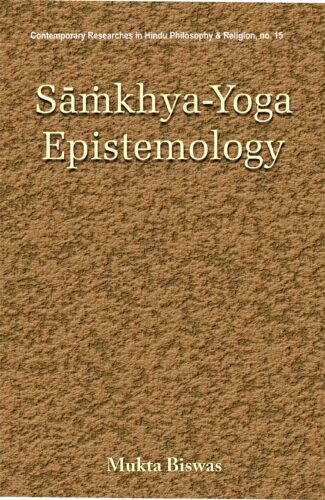
The book presents a comprehensive idea of the Samkhya-Yoga epistemology by examining in detail specific representative works including the Samkhyakarika of Isvarakrishna, Yogasutra of Patanjali, and Yuktidipika, Matharavritti and other schools of Indian philosophy. It discusses important tenets of each system, their reference in the Upanisads, the definition of epistemology and its relation with ontology and logic.
The book presents a comprehensive idea of the Samkhya-Yoga epistemology by examining in detail specific representative works including the Samkhyakarika of Ishvarakrishna, Yogasutra of Patanjali, and Yuktidipika, Matharavritti and other schools of Indian philosophy. Beginning with some fundamentals like origin of the words samkhya and yoga, it discusses important tenets of each system, their reference in the Upanishads, the definition of epistemology and its relation with ontology and logic. It delves into the two kinds of knowledge, direct (prama) and indirect (pramana) as understood by the Samkhya-Yoga system and examines these concepts from the viewpoints of other philosophical schools as well. It defines perception (pratyaksha pramana) and inference (anumana) and critically assesses the understanding of these in different philosophical systems focussing on the Samkhya-Yoga interpretation. It also deals with the components of perception and inference along with the types and fallacies associated with them. Verbal testimony or shabda is again treated in a detailed manner. The work examines aspects like the nature of word and logical structure of a sentence as well. The book will be useful for students and scholars of Indian philosophy who are keen to grasp the fundamentals of the Indian philosophical systems even while gaining in-depth understanding of each school of ancient Indian philosophy particularly their interpretation of concepts of knowledge.

This book tries to look at samnyasins and the samnyasashrama in their long existence from the times of Shankara to the present day and also throws light on how scholars, common people, as well as the samnyasins themselves view their roles, both as individual personalities and as persons living in an institution relating to society as a whole.
The present book, Samnyasins in the Hindu Tradition: Changing Perspectives, covers a wide territory, trying to look at the samnyasins and the samnyasashrama in their long existence from the times of Shankara to the present day. This book traverses a slightly different trajectory from the usual book on samnyasins as it attempts an overview of the samnyasin and the institution over a long period from Vedic to post-Independence times and speculates on the future of the institution as well. Samnyasins and scholars not only from India, but from countries as diverse as Canada, South Africa, UK and USA also figure in this collection. The samnyasashramas covered also range from the traditional Advaita, Vishishthadvaita and Dvaita to include many more later ashrams such as the Vira Shaiva (Lingayat), Dharmapuram Adheenam, Arya Samaj, Shivananda Ashram, Ramakrishna Mission, Swami Narayan and many others. Another departure from other books on the subject is that it also compares institutions like the Ramakrishna Mission for instance, as they function in India and in foreign countries where they have established ashrams. In the midst of varied opinions regarding the samnyasin and the samnyasashrama this book will throw light on how scholars, common people, as well as the samnyasins themselves view their roles, both as individual personalities and as persons living in an institution relating to society as a whole.
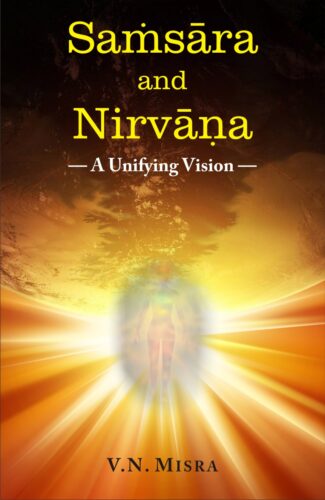
A unifying vision between Samsara and Nirvana has been presented in this study by placing human beings at the centre of the universe. It draws the inferences under discussion from the different systems of Indian philosophy and the philosophy of the West.
A unifying vision between Samsara and Nirvana has been presented in this study by placing human beings at the centre of the universe. Once this is accepted, the role of God turns to be nothing. This fact is not acceptable to most of the schools of Indian philosophy because of their strong faith in Brahman (God) as the creator of the universe. In that, this study raises the fundamental question. Why Brahman, being the creator, sustainer and dissolver of the universe, has taken such a long time of more than three billion years after the solar system to provide the conditions for the evolution of human life? Since the first cause of universe is the most difficult question, it is suggested to see the creator on the creation itself.
An inference has been drawn that the action (karma) of human beings cannot be treated as ignorance, once it is accepted that human beings are at the centre of the universe. We human beings have nothing else except the freedom of action (karma). In fact, karma itself is freedom.
This volume, in a way, an offshoot of the authors earlier work, Science of Consciousness draws the inferences based on the different systems of Indian philosophy and the philosophy of the West.
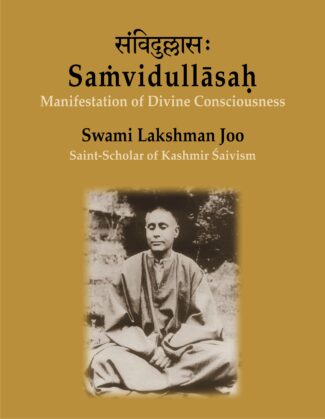
This volume is a Birth Centenary tribute to Swami Lakshman Joo Raina (1907-1991), a great saint and scholar of Kashmir, who revived the tradition of Kashmir Shaivism. The articles by scholars, disciples and devotees reflect on his life and work, and on his spiritual influence.
Swami Lakshman Joo Raina, also called Lakshman Brahmacarin and Ishvara Svarupa (1907Ý1991) was one of the greatest saints of 20th century India, who was at the same time an extraordinary scholar who relived and revived the almost forgotten tradition of Kashmir Shaivism. His high spiritual state was matched by his profound knowledge of the Shaiva scriptures and of the great thinkers and commentators of the tradition Þ Abhinavagupta, Kshemaraja and others. Swami Lakshman Joo lived a secluded life in his ashram in Kashmir, but he taught the texts of Kashmir Shaivism to Pandits and scholars from different countries, besides giving spiritual guidance to a number of seekers and disciples. On the occasion of his Birth Centenary, a volume in his memory is being brought out containing articles by scholar-disciples, devotees and relatives which throw light on the extraordinary life of this saint and on his contribution to reviving and continuing the tradition of Kashmir Shaivism. Articles on his life by his close disciple Prabha Devi and his scholar-disciples Jaideva Singh and Jankinath Kaul `Kamal’, an exhaustive article on his place in the Kashmirian Shaiva tradition by Professor Alexis Sanderson of Oxford, to mention only a few, provide an insight into his saintly personality and his great qualities as a teacher. Even scholars and seekers who have never met him and have been deeply influenced by his spiritual presence have contributed an account of their experience. The volume is richly illustrated by historical photographs which provide a visual testimony of the life of Swami Lakshman Joo. A list of his published works is an important complement.
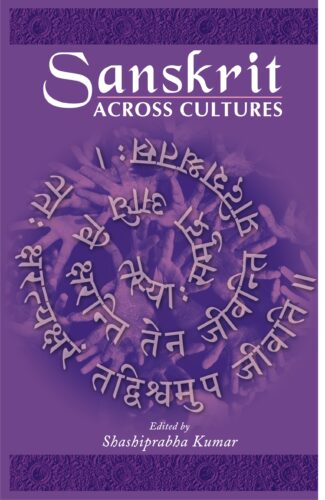
Sanskrit, one of the oldest extant languages of the Indo-European group, is hailed as the memory of the human race and its earliest cultural history. In this book scholars trace the links of Sanskrit with various countries of the world and their cultures and languages.
Sanskrit may be said to be one of the oldest extant languages of the Indo-European group of languages. It is hailed as the memory of the human race and its earliest cultural history. No serious study of the world civilization and cultures of different countries will be possible without understanding Sanskrit as it evolved and influenced other languages of the world or bears association with them. This volume has articles that attempt such an understanding of the Sanskrit language. Scholars trace the link of Sanskrit with various countries of the world and their cultures and languages. They throw light on Sanskrit grammar as recorded in Chinese works and contributions of Sanskrit to Chinese linguistics; on the many Sanskrit manuscripts available in Japan; and similarities and regularities in the phonetic system, grammar and vocabulary of Sanskrit and Russian. They view links between Sanskrit and the Slavonic languages, German, English, Persian and the Indonesian languages, examining mutual borrowings. They explain the way translations from one language to another have affected preservation and dissemination of knowledge. The articles, a result of meticulous study and marked by simplicity and clarity in expression, will be interesting and informative to a range of scholars of Indology.
| There are no products |